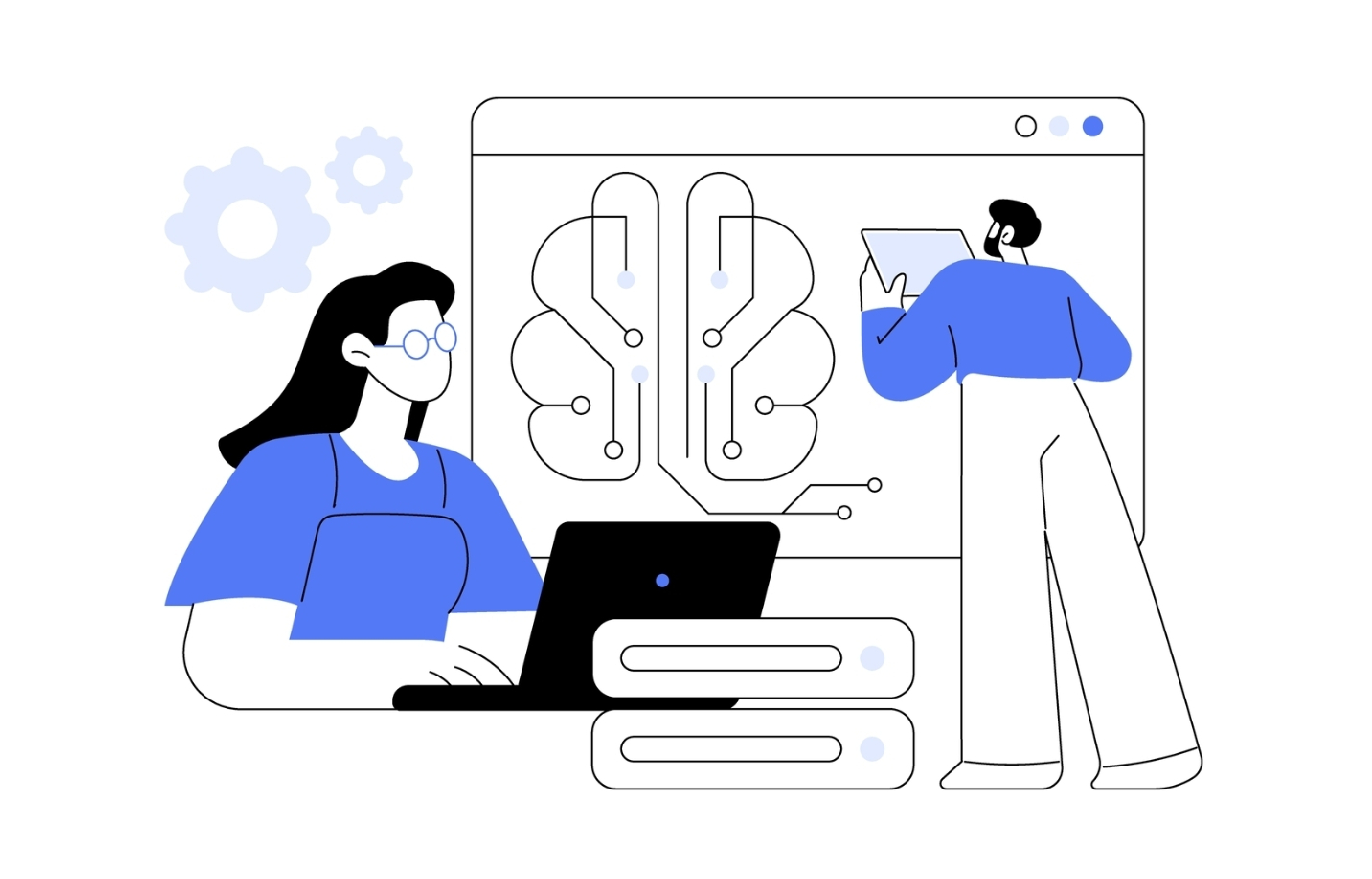Named Entity Recognition (NER) is a method used to find and classify specific types of information in text, like names of people, organizations, places, dates, and more. It is an important part of Natural Language Processing (NLP) and analyzing text. As the amount of text data grows every day, NER has become more important for finding useful information. This article will explain what NER is, how it is used, the methods behind it, and the challenges it faces.

How NER Works?
Named Entity Recognition (NER) works in two steps: first, it finds specific entities in a text, and then it categorizes them. For example, it detects where an entity, like a person, place, or date, starts and ends in a sentence and identifies what type it is. NER systems use language rules and computer models to understand patterns and context. This ability to identify and organize information helps turn messy, unorganized text into useful, structured data. The NER process typically follows a systematic flow that includes the following steps:
1. Text Preprocessing
The first step in the NER process is text preprocessing, which prepares the raw input text for entity recognition. This stage may involve tasks like tokenization (splitting the text into individual words or phrases), part-of-speech tagging (identifying the grammatical roles of words), and lemmatization (reducing words to their base forms). Preprocessing helps standardize the text and ensures that NER models can work with consistent data, improving their accuracy.
2. Entity Detection
Once the text is preprocessed, the NER system begins the task of detecting named entities. This involves scanning the text for specific patterns, keywords, or linguistic cues that may indicate the presence of an entity. At this stage, the system identifies potential entities but may not yet know what type they belong to.
3. Entity Classification
After detecting potential entities, the system must classify them into predefined categories such as:
- People. Names of individuals (e.g., “Albert Einstein”)
- Organizations. Companies or institutions (e.g., “Google”)
- Locations. Geographical areas or landmarks (e.g., “New York”)
- Dates and Times. Specific dates or periods (e.g., “January 1, 2000”)
- Monetary Values. Currencies or prices (e.g., “$1,000”)
- Percentages. Percent values (e.g., “50%”)
This classification can be accomplished using machine learning models that have been trained on annotated data. These models consider the context in which the entity appears to make an informed decision about its type.
4. Eliminating Contextual Ambiguity
One of the key challenges in NER is the elimination of contextual ambiguity — especially when the same word can represent multiple types of entities depending on context. For instance, "Paris" can refer to a city in France or a person’s name. Advanced NER systems, particularly those based on machine learning and deep learning models (like BERT), use contextual information from the surrounding words in a sentence to determine the correct classification. These models take into account both local and global context to resolve ambiguities, significantly improving accuracy.
5. Post-Processing
Once named entities have been detected and classified, post-processing steps may be employed to refine the results. This may involve filtering out false positives or applying additional rules to fine-tune the classification. For example, a date entity might need to be checked against a list of valid date formats, or an organization name might require validation against a database of known organizations.
6. Output and Integration
The final step in the NER process is the generation of structured output. The recognized entities, along with their categories, are output in a structured format (e.g., JSON, XML), making them easily accessible for further analysis or integration into other systems. For example, in a news article, NER might identify and classify "Barack Obama" (person), "Washington D.C." (location), and "January 20, 2009" (date), and output them in a structured form that can be used in downstream applications like content analysis or search indexing.
The NER process involves detecting named entities, classifying them, and resolving ambiguities using context. The combination of rule-based methods and advanced machine learning models helps NER systems tackle various language challenges, turning unstructured text into structured data for applications in areas like search engines, customer support, and more.
Why is NER Important?
With the huge amount of digital content being created every day, organizing and understanding information has become very important. For businesses in areas like healthcare and finance, using Named Entity Recognition (NER) can bring big benefits. The capabilities of Named Entity Recognition facilitate several applications, including but not limited to:
- Better Search Results. Search engines can use NER to find and show more accurate results for what users are looking for.
- Sorting Content. Companies can use NER to automatically sort news articles or blogs, making it easier to manage information.
- Understanding Customers. NER can study things like customer reviews to find out what people like and what trends are popular, helping with more effective marketing.
- Analyzing Opinions. By looking at how people feel about certain brands or products, NER helps businesses understand public opinion and the market better.
Who uses NER?
Named Entity Recognition (NER) is used in many areas to turn unorganized text into useful information. One major use is in entity extraction, where NER processes large amounts of text to pull out important details. For example, in journalism, it helps find key facts about people, places, and events, allowing reporters to quickly create accurate and well-researched articles.
- Automated Customer Support. NER enhances AI-powered chatbots and virtual assistants by identifying key details like product names, services, or locations, improving response accuracy and user experience.
- Biomedical Research. NER extracts and categorizes terms like drug names, genes, and diseases from scientific texts, aiding in faster literature reviews and the development of knowledge graphs for medical advancements.
- Legal Document Processing. NER automates the identification of important entities like case names, laws, and contract clauses, speeding up document reviews and ensuring critical details aren’t overlooked.
- Social Media Analysis. NER tracks brand mentions, sentiment, and public opinions on events, providing insights for marketing and reputation management.
- Financial Sector. NER aids in fraud detection by identifying unusual patterns in transactions and gathers market data from news articles for analysis.
The wide range of NER applications shows how important it is for understanding language and how it is changing industries that rely on analyzing text.
Lingvanex as Expertise in NER
Lingvanex offers its own solution based on the company's unique technologies. It helps to recognize and classify important elements in the text, such as names, organizations, places and dates. This solution helps businesses analyze large amounts of data, find the information they need and use it to analyze content, reports, and track brand mentions.
Lingvanex also provides analytics so that customers can track trends, understand people's opinions, and make decisions based on data. The company uses modern technology to make recognition accurate and correct, even when one word can mean different things in different contexts.
Conclusion
Named Entity Recognition (NER) is a key part of Natural Language Processing, helping organizations extract valuable insights from unstructured text. With its wide range of techniques and uses, NER is essential in today's data-driven world. By effectively implementing NER, businesses and researchers can fully leverage their data and remain competitive in a rapidly evolving environment.



